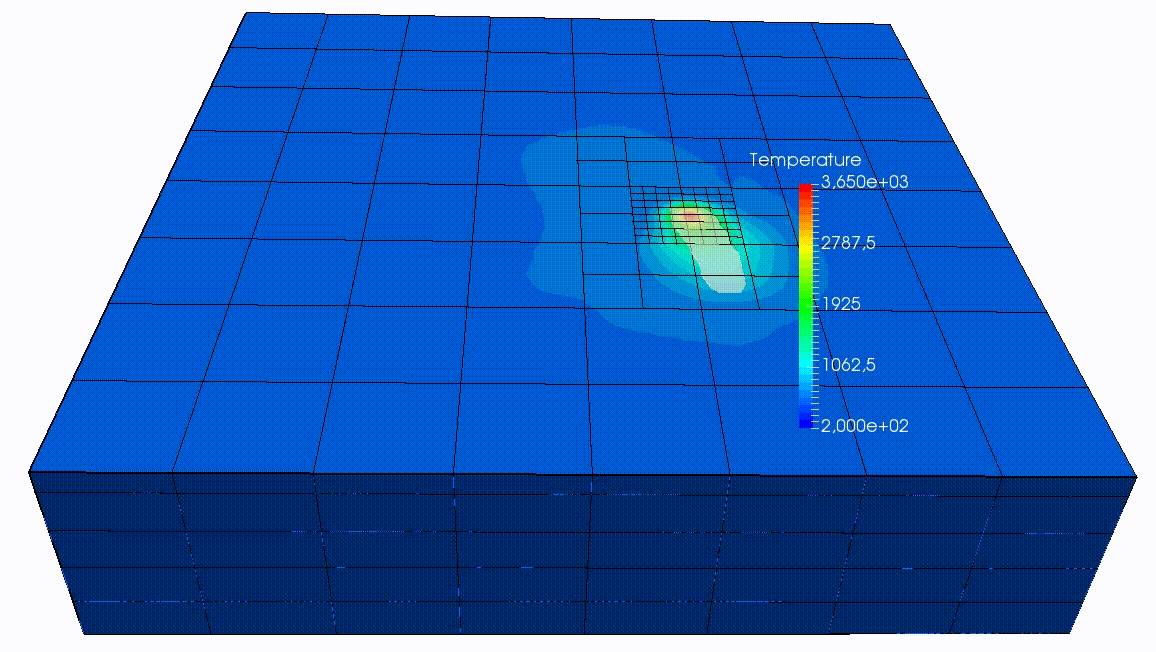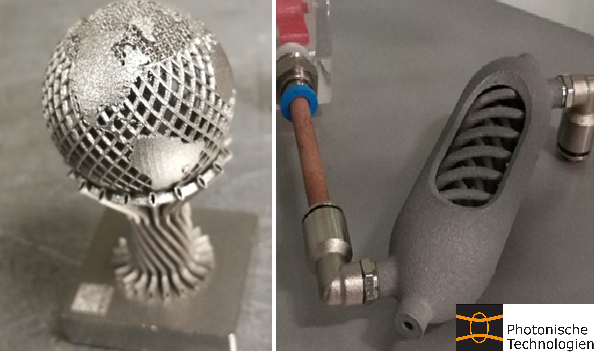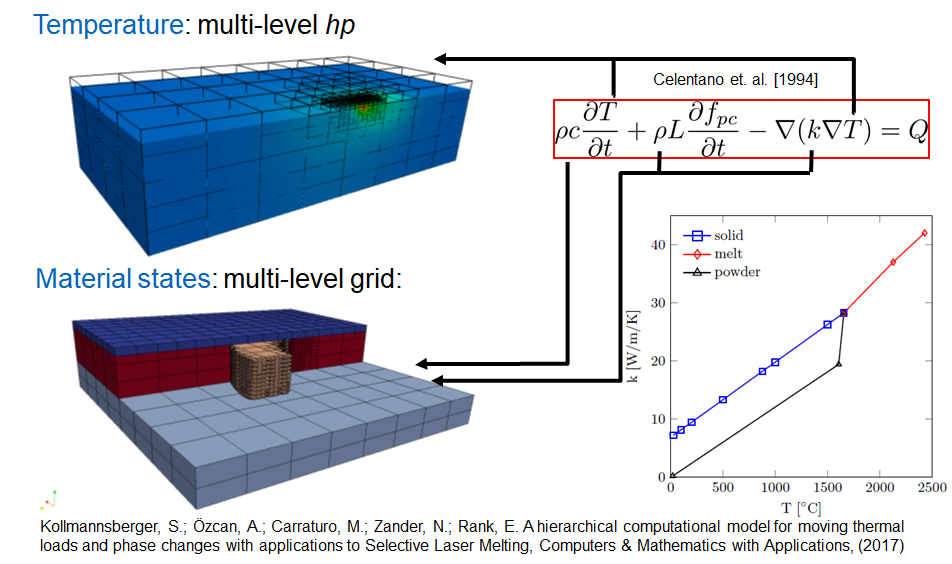Additive Manufacturing
The contact person for this project is Stefan Kollmannsberger (This email address is being protected from spambots. You need JavaScript enabled to view it.).
Additive Manufacturing:
Additive Manufacturing, also called 3D printing, is a general term for the production of artifacts by successively adding material in a layerwise fashion. There are numerous processes such as fused deposition modelling, stereolithography and laser power bed fusion. We focus on modelling the process of laser power bed fusion. In this process, a highly focused laser selectively melts powder. Thereby the local state of the material changes from powder to liquid to solid. Once one layer of powder has been treated selectively, a new layer of powder is added. The process is repeated until the final artifact emerges. An example of the process and selected artifacts is given below
The process |
|
A showcase product and an enginnering application: a heat exchanger These pictures were taken at our cooperation partner the Institute of Photonic Technologies |
We are working on the simulation of the processes and products generated by additive manufacturing. Aspects of the simulation of products of additive manufacturing are discussed here. For the simulation of the process we use a set of coupled differential equations describing the transient thermo-elasto-plastic process. For the discretization we developed a special variant of the finite cell method [1]. Herein we embed the physical domain into a fictitious domain. We track the evolution of the fictitious domain as well as its state (powder, liquid or solid) in time and space using fast octree-like discretizations. The diffusive temperature field is computed in the sense of the finite cell method on a separate grid equipped with high-order finite elements. This grid refines adaptively towards the impact zone of the laser beam and de-refines in regions where the heat has already dissipated.
|
Computational Setting
|
Example Computation |
We are also working on the computation of residual stresses which are inherent to this process. This computational analysis forms the basis for the optimization of the process on the scale of the melt pool as well as on the macroscopic scale.
Conferences:
We have organized the first ECCOMAS conference on the Simulation for Additive Manufacturing in 2017 @TUM.
We are also heavily involved in the organization of the follow up ECCOMAS conference on Simulation for Additive Manufacturing 2019 in Pavia, Italy.
Publications
-
Additive manufacturing in construction: A review on processes, applications, and digital planning methods
Additive Manufacturing, 2019
DOI: 10.1016/j.addma.2019.100894 - Status: Postprint / reviewed
-
A hierarchical computational model for moving thermal loads and phase changes with applications to Selective Laser Melting
Computers & Mathematics with Applications 75 (5), pp. 1483-1497, 2018
DOI: 10.1016/j.camwa.2017.11.014 - Status: Verlagsversion / published
-
Residual stresses in metal deposition modeling: discretizations of higher order
Computers and Mathematics with Applications, 2018 - Status: Postprint / reviewed

